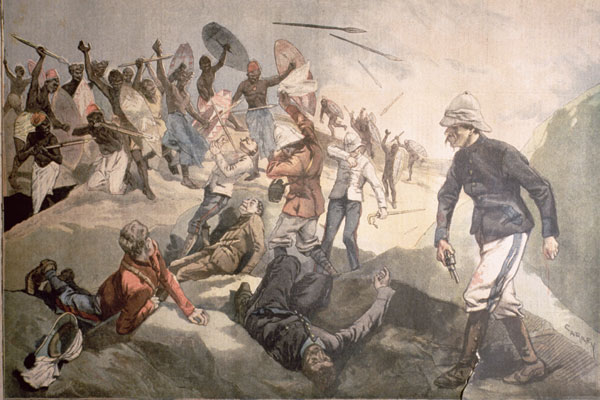Below the title of this book, engendering immediate distrust, lies the legend ‘Stories of Missing Works of Art and Literature.’ ‘Story’ is such a weasel word, implying a tale as much as truth; a fiction that when turned into a narrative develops into the fact that every schoolboy knows; or a real event embroidered with fictitious detail to amuse; even a ripping yarn — as proves to be the case with the first of the essays in this book.
‘Has anyone seen the Mona Lisa?’ Rick Gekoski asks, weaving Picasso into the warp and weft of her temporary absence from the Louvre in 1911-13; Picasso, by then notorious and wealthy, played no part in the theft, and his arrest was nothing but peripheral elimination from police enquiries (the dry, authoritative account is to be found in John Richardson’s second volume of A Life of Picasso, 1996), but Gekoski must give us a yarn worthy of Reader’s Digest.
This he further embellishes with the fact that Leonardo sold his masterpiece ‘some time in the 1530s … to Francis I for the enormous sum of about $100,000 in today’s money’ — though Leonardo died in 1519, and we have no knowledge of the terms by which the picture passed into that king’s hands. But the facts do not matter, for what fascinates Gekoski is the phenomenon of crowds in their thousands queuing for hours to contemplate the empty wall on which she had once hung.
Knowing far less about their subjects, I might have been convinced by the following essays on theft and destruction, but Leonardo’s sale of his ‘Mona Lisa’ from the grave lurked in my mind. How reliable was Gekoski’s account of the sack of Benin by the British in 1897? Was there really, as a consequence, a booty of more than 900 Benin bronzes? Why were only 203 deposited in the British Museum? Were the curators there really so blind that, as late as 1950, they sold some for £15 apiece? If so, then we should be appalled by both the desecration of Benin’s cultural heritage and by the curatorial blundering.
These connected but almost unrelated matters are tied together in an essay that also extols an expression of Black Power in the Olympic Games of 1968, launches a critical assault on Joseph Conrad and his Heart of Darkness, not for any literary failure but for his Victorian view of the black African as innately savage, and aims a scatter-gun at both rapacious and well-intentioned colonialism (‘hard to tell them apart’). Conrad’s contempt for Africans was surely the uninformed view of almost every European, consolidated by the slave trade and Christian missionaries (though not by Emil Torday, collector for the British Museum, nor by Roger Casement). Indeed the subjugation of Africa by Christianity and European medicine has had disastrous consequences wholly unforeseen.
If, in the spirit of generosity, we take Gekoski to be a scholar, scrupulous with facts, rather than, as his style suggests, a popular journalist, then his discursions on such matters as the burning of Byron’s memoirs, Larkin’s diaries and the library of the Villa of the Papyri in Herculaneum are enchanting speculations on what might have been (and in the last case, what might yet be). ‘Do it yourself’, the tale of Mark Hofmann, forger of Mormon documents and, inexplicably, a murderer, is perhaps the most ripping of his yarns; the theft of the Urewera Mural, a preposterous expanse of canvas painted by New Zealand’s foremost ever painter (pause for scornful snort), the most hilarious. But in his account of Guido Adler’s library in Vienna after the Nazi Anschluss, and the disappearance and recovery of Mahler’s manuscript score for the orchestral setting of a Rückert poem as a song, Gekoski reaches a level of high seriousness and pathos less evident elsewhere.
He is intrigued by the loss or destruction of cultural treasures and the responses they evoke — ranging from tant pis to the veneration of an emptied space. He is troubled by the difference in every value between a ruined original and its perfect replica, and does not understand his own ‘unsettling conclusion’; and he confesses that he has ‘never understood what art is’ — though this does not preclude disdain for John Piper and Graham Sutherland, and hyperbole (via Robert Venturi) for the architecture of Charles Rennie Mackintosh as ‘comparable in scale and majesty to Michelangelo’.
Gekoski expresses his present-day liberal political views, though he must know them to be out of harmony with the past to which they are so angrily applied. Though not central to any argument, he himself intrudes as though to offer justification for his interest and views, and in every chapter we glimpse the child of seven chewing bubblegum, the student with reproductions of Picassos above his bed, the postgraduate in Oxford slaving for his D. Phil, the rummager in the archives of the Tate, the bibliophilic sleuth and the dealer in rare books.
The merry tale of Omar Khayyam’s Rubaiyat in a jewelled binding by Francis Sangorski (the Fabergé of bookbinders), lost with the Titanic, twists neatly at the end to bring Gekoski to the fore as the man who commissioned a Sangorski box for, of all things, a first edition of Nabokov’s Lolita.
At his best his essays recall the breadth and interest of Aldous Huxley’s, but rarely their acuity; at worst they echo the tedious maunderings of Will Self.






Comments